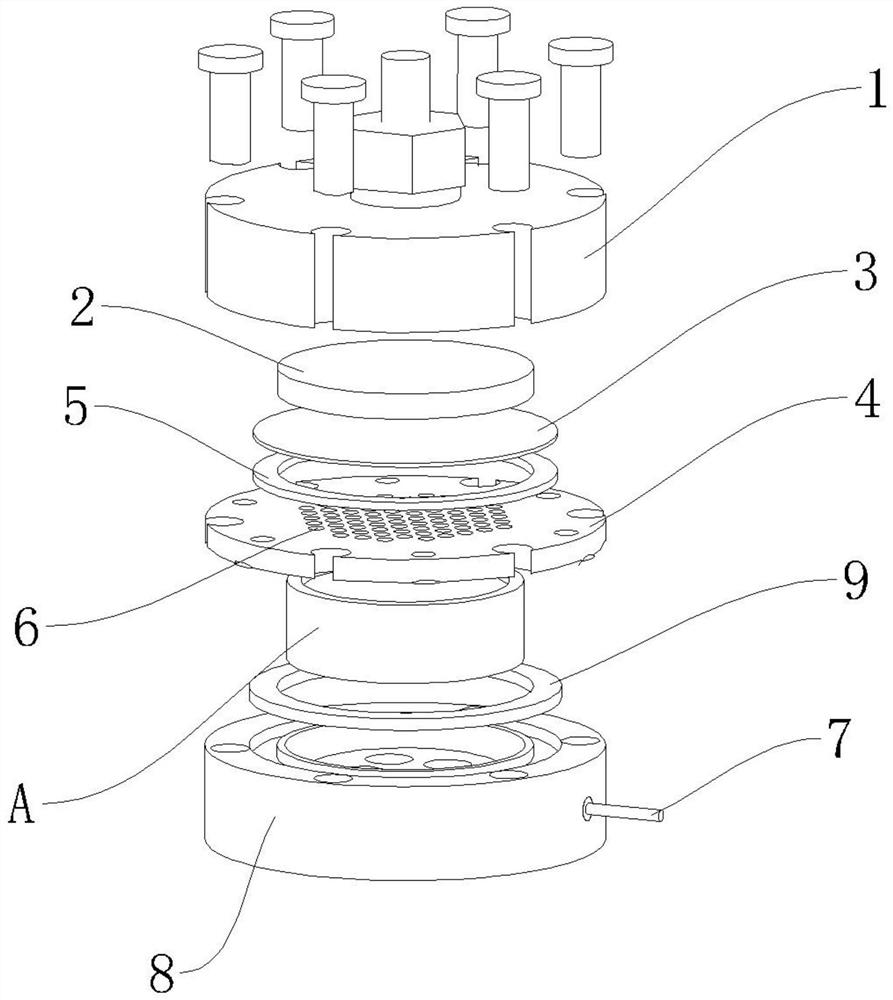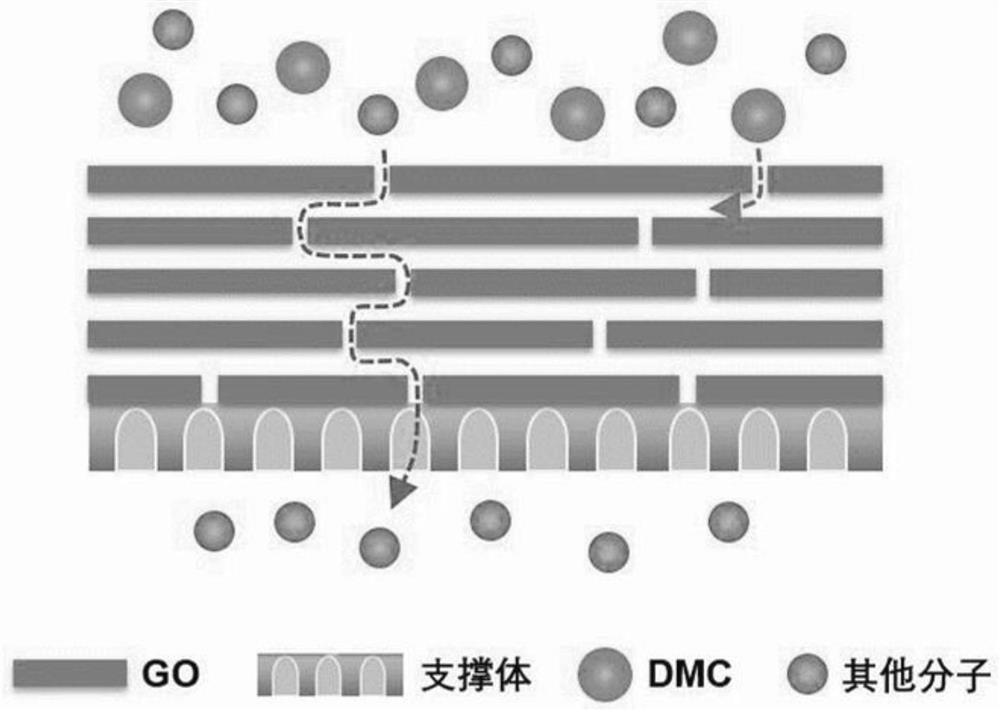Electrochemical mass spectrum in-situ battery device
A battery device and electrochemical technology, applied in the field of electrochemical analysis, can solve the problems of toxic mixtures of lipids, reduce instrument accuracy, instrument or system damage, etc. Effect
- Summary
- Abstract
- Description
- Claims
- Application Information
AI Technical Summary
Problems solved by technology
Method used
Image
Examples
Embodiment 1
[0064] Such as figure 1 with 2 As shown, an electrochemical mass spectrometer in-situ battery device includes an upper casing 1 , a sand core glass plate 2 , a separation membrane 3 , a fixed plate 4 with a plurality of air-permeable holes, and a lower casing 8 .
[0065] The top of the upper housing 1 is provided with an air outlet 10, and the side wall is embedded with a positive electrode lead terminal; the upper housing 1 is provided with an installation groove 11, and the sand core glass plate 2 is arranged in the installation groove 11 and the air outlet 10 is sealed. The separation membrane 3 is pasted on the bottom of the sand core glass plate 2 .
[0066] The stainless steel plate 4 is fixedly connected to the upper casing 1 through six insulating rubber-wrapped bolts evenly arranged in its axial direction, and the separation membrane 3 and the sand core glass plate 2 are fixed in the upper casing 1 . The separation membrane 3 and the stainless steel plate 4 are sea...
Embodiment 2
[0077] First of all, it should be noted that when using mass spectrometry for detection, any trace impurities (such as water, a small amount of air, etc.) may participate in electrochemical reactions, thereby affecting the accuracy of test results. Therefore, the electrolyte salts and solvents used in the operation need to be purified and dried before use to ensure that the degree of contamination is minimized.
[0078] The electrolyte is made of purified DMC and LiPF 6 Composition: Lithium sheet is used as the negative electrode, nickel-cobalt-lithium-aluminate ternary material is used as the positive electrode;
[0079] The assembly of the battery is completed in a glove box filled with argon gas. The specific assembly process of the battery chamber is as follows: the lithium sheet (negative electrode material), electrolyte (DMC and LiPF 6 Composition) Wetted diaphragm, nickel-cobalt-lithium-aluminate ternary material (positive electrode material), stainless steel mesh, and...
Embodiment 3
[0087] Compared with Example 2, other conditions remain the same, only the electrolyte system is replaced, for DEC+LiPF 6 The blocking effect test of the electrolyte system: the results show that the existence of the separation membrane can block 99.99% of DEC from entering the mass spectrometer, effectively avoiding the dilemma of the volatile electrolyte drying up under argon purging.
[0088] It shows that the electrochemical mass spectrometry in situ battery device of this example can be applied to different electrolyte systems and has wide practical value.
PUM
| Property | Measurement | Unit |
|---|---|---|
| thickness | aaaaa | aaaaa |
| thickness | aaaaa | aaaaa |
Abstract
Description
Claims
Application Information
 Login to View More
Login to View More - R&D
- Intellectual Property
- Life Sciences
- Materials
- Tech Scout
- Unparalleled Data Quality
- Higher Quality Content
- 60% Fewer Hallucinations
Browse by: Latest US Patents, China's latest patents, Technical Efficacy Thesaurus, Application Domain, Technology Topic, Popular Technical Reports.
© 2025 PatSnap. All rights reserved.Legal|Privacy policy|Modern Slavery Act Transparency Statement|Sitemap|About US| Contact US: help@patsnap.com



